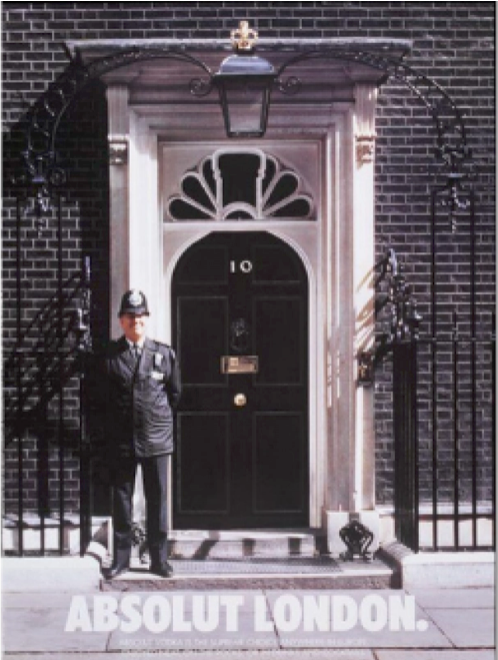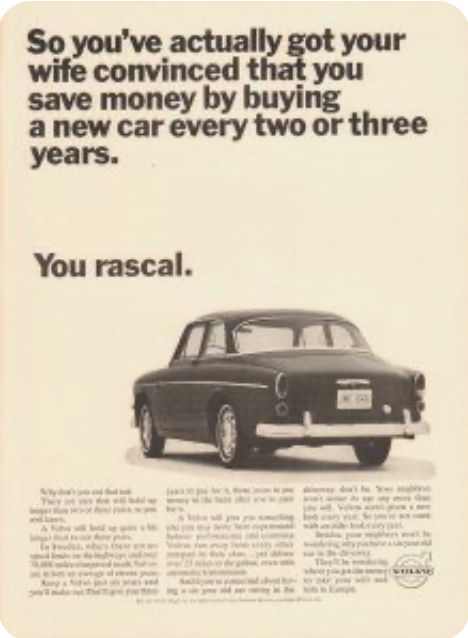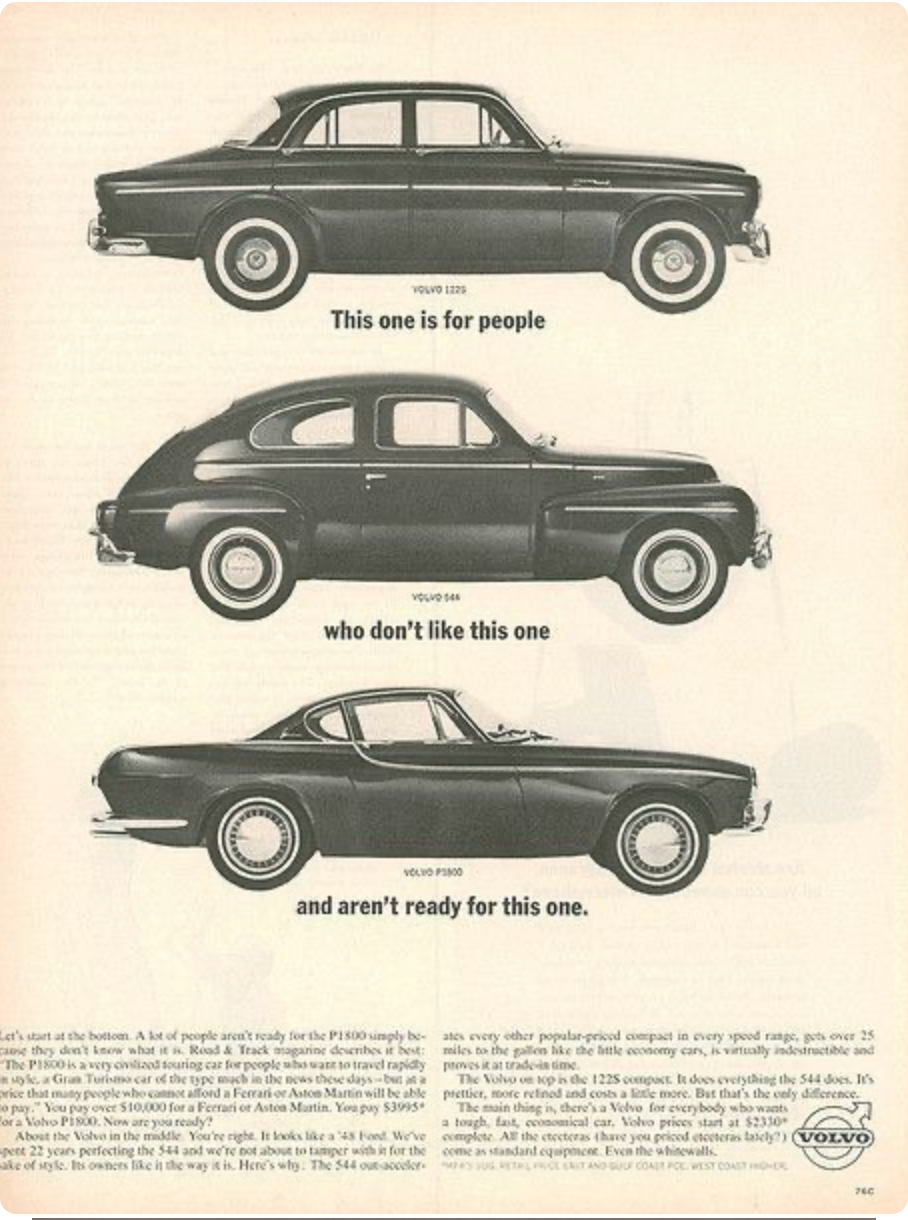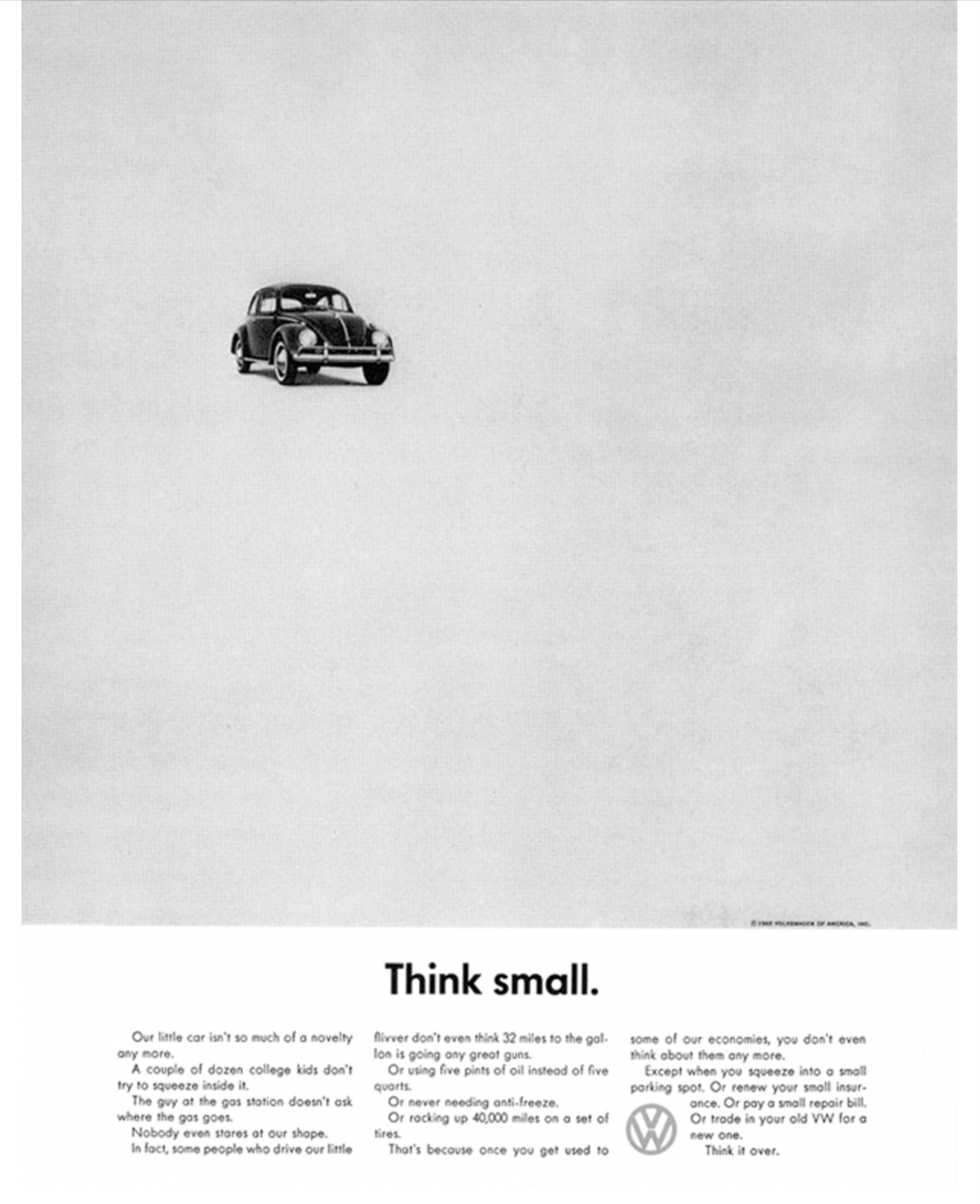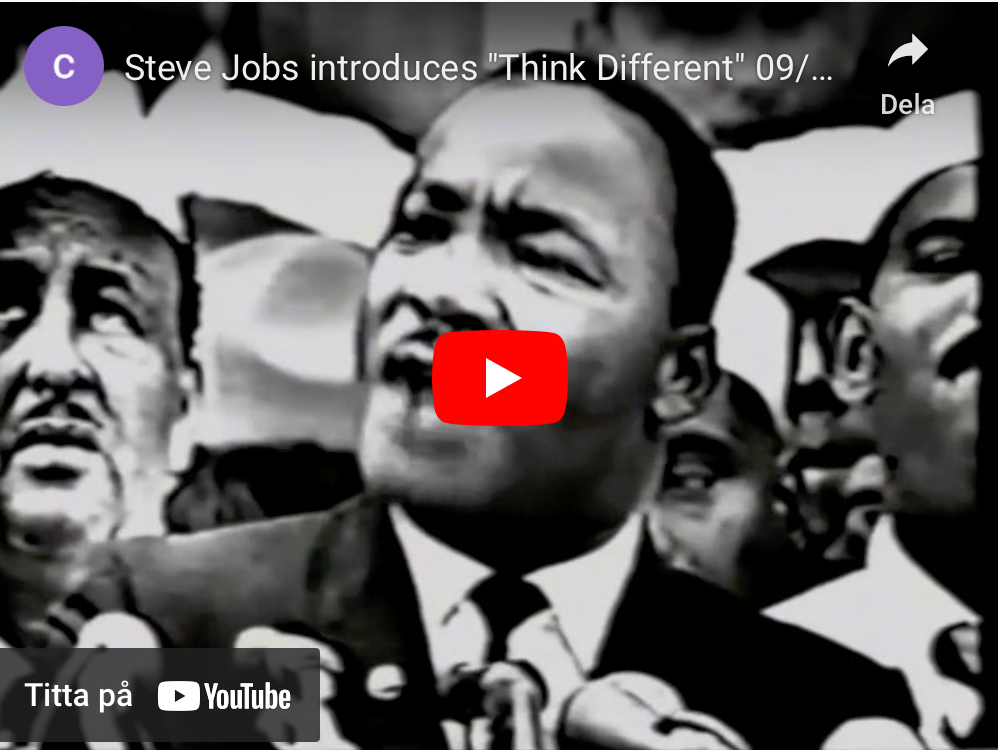A History of Creativity. The Future of Advertising.
Being creative is a privilege exclusive to humans. Therefore, the future of advertising appears less bright. Or what do You think?
Measurements of advertising effectiveness are nothing new. Already in the 1940s, the design of advertising was guided by various measurements. Surely for good reasons. But even then, the measurements limited creativity. A standard was created for how advertising should look. The advertising became bland and meaningless.
As a reaction to this uniformity, Bill Bernbach started the first creative-owned agency, DDB, in the late 1940s. It marked the beginning of a creative revolution. DDB formulated ten basic rules, including being honest and relevant, simple, avoiding "safe" ideas, and standing out from the crowd.
The best advertising campaign ever
They truly succeeded. In 1959, they launched the best advertising campaign of the century. With Volkswagen as the client, Bill Bernbach and the creative team initiated a new era in advertising communication with Beetle ads. The campaign was still admired throughout the 1980s and 1990s by me and most of my Swedish colleagues. We probably thought it was the pinnacle of advertising history. Advertising that didn't look down on its audience but instead respected it. That view of advertising and communication lived on in Sweden at least until 2010 or until smartphones became everyone's possession.
Data-driven advertising doesn’t have the guts to challenge.
Advertising finds itself in a similar situation today as in the 1940s USA, with an overreliance on data-driven approaches. However, a difference is that data-driven advertising today means communicating partly personalized and personified.
A technology that creeps into people's lives like an uninvited guest – a stalker.
Companies selling these data-driven services claim that data-driven communication provides higher precision. They argue that traditional creative teams didn't listen to the audience but did what they themselves liked. They were their own target audience, so to speak.
Data-driven advertising doesn’t have the guts to challenge.
Advertising finds itself in a similar situation today as in the 1940s USA, with an overreliance on data-driven approaches. However, a difference is that data-driven advertising today means communicating partly personalized and personified. A technology that creeps into people's lives like an uninvited guest – a stalker.
Companies selling these data-driven services claim that data-driven communication provides higher precision. They argue that traditional creative teams didn't listen to the audience but did what they themselves liked. They were their own target audience, so to speak.
But the skilled communicators weren't just good at listening to the audience but could also present a new way of communicating that worked by going against the flow. They could build brands by challenging the recipients. They focused on content and presentation, unlike today's communicators who let algorithms dictate.
“It gets even creepier when the message starts with the words ‘Hi Mikael...’”
The data-driven and personalized advertising simply doesn't live up to its name. At least it very rarely reaches me with messages I've longed for, need, or gives me new ideas. I usually get a creepy feeling that the sender has confused me with someone else. It gets even creepier when the message starts with the words 'Hi Mikael...'
With the hope of a creative revolution
I can only hope for a new creative revolution. Or is that an unrealistic thought? Good marketing communication is not just a way to make money but also a part of a society's culture.
So, what do you think? Will it be AI all the way – data-driven and uncontrollable? Or can we return to intelligent, tasteful, smart advertising that takes recipients seriously and is still profitable?




